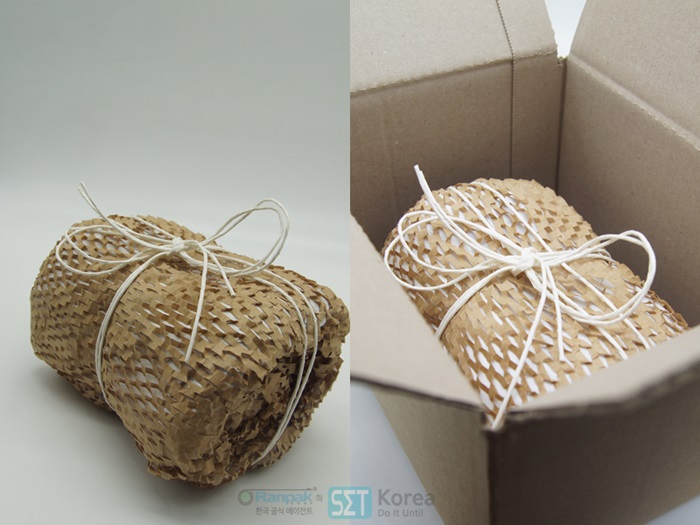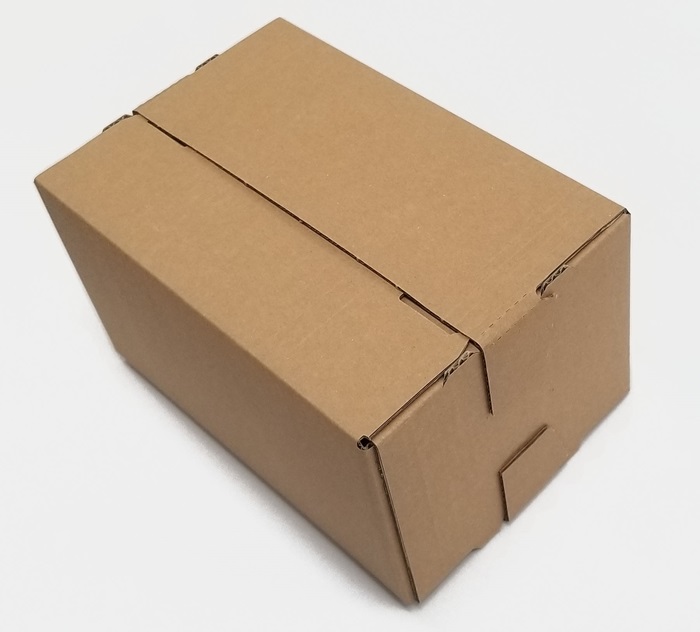
Eco-friendly paper wrappers shaped like honeycomb are great buffers and sport better designs, and have been adopted by the cosmetic and fashion industries. (SET Korea)
By Oh Hyun Woo and Lee Hana
| A 33-year-old office worker recently bought eco-friendly lipstick from an online shopping mall. When the item arrived on her doorstep a few days later, she was surprised to find it wrapped in paper cut like honeycomb in the box. Initially taken aback by this, she realized that this was a green alternative to plastic bubble wrap and chose the lipstick's maker as her brand of choice. |
The growing push toward a greener society has signaled the need for more eco-friendly ways of consumption to ensure humanity's survival.
Regulations have sought to advance this trend through bans on the use of single-use cups at cafes, the replacement of plastic straws with paper ones, and the elimination of plastic bags at supermarkets and plastic umbrella covers at subway stations.
In addition, the shipping and delivery industry has also launched its own green movement.
According to a report released on June 6 titled "The Limits and Implications of Plastic Waste Management" by the Gyeonggi Research Institute, the average number of parcels delivered to a consumer in Korea was 45 in 2017, the highest in the world and considerably above the corresponding figures in the U.S. (35), Japan (30) and China (29).
Though admitting that exact statistics on Korea's plastic waste are hard to come by due to the lack of a counting system, the report said the rise in deliveries directly correlates with spikes in plastic waste including plastic tape, wrapping and other packaging materials.
In response to this trend, a wide variety of products and strategies have been developed with the aim to reduce the use of plastic packaging, whose materials take over a century to naturally decompose.

This eco-friendly box uses adhesive flaps to securely close and wrap the package. (Nalge Box)
A box that requires no tape developed by a mid-size company is one example. Adhesive flaps on either side of the box remove the need for tape to securely wrap and close the package.
Eco-friendly paper fillers have slowly begun to replace bubble wrap as well. Such honeycomb-shaped materials are a costlier alternative but make better buffers and sport better designs than those made from plastic. The cosmetics and fashion industries are adopting the use of such fillers.
Green packaging like paper hanger boxes and coolers are also preferred alternatives to packaging made with felt or Styrofoam.
The positive aspects of using eco-friendly packaging are indisputable. According to a study conducted by a home shopping network, the use of eco-friendly packaging over the past year helped to save enough plastic to cover 9,126 square meters, or bigger than seven soccer stadiums.
"Plastic packaging used in delivery parcels doesn't fall under existing regulations but on May 9, some major distributors signed an agreement to reduce the use of plastic. Depending on the results seen in the field, we will push for regulations that limit the use of plastic packaging," a Ministry of Environment official said.
hyunw54@korea.kr